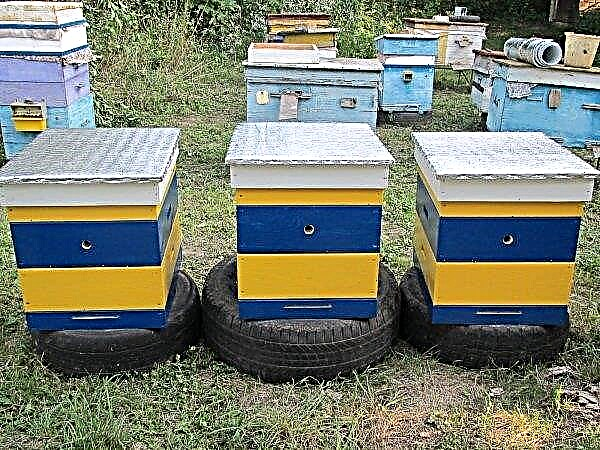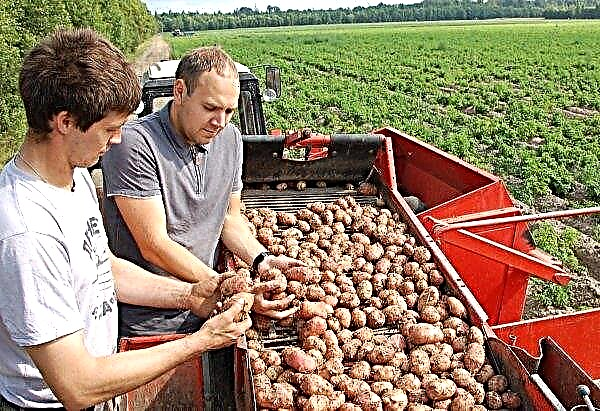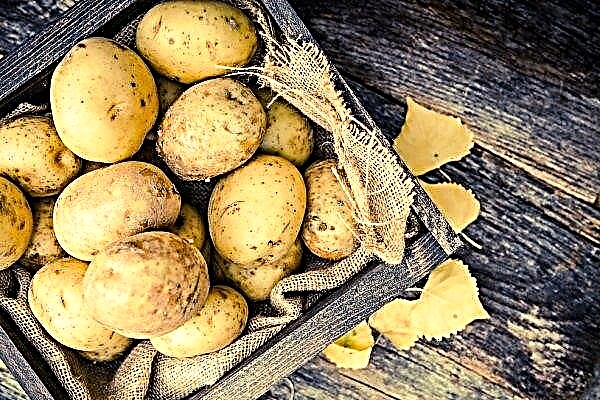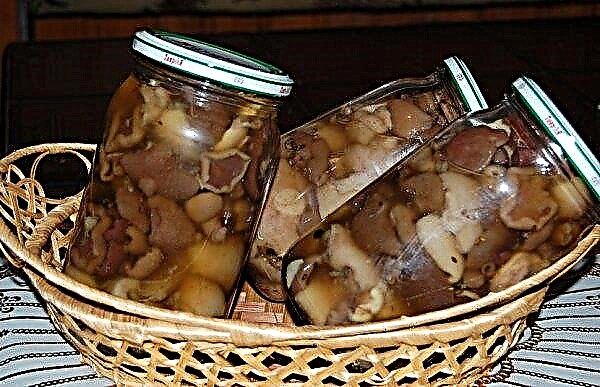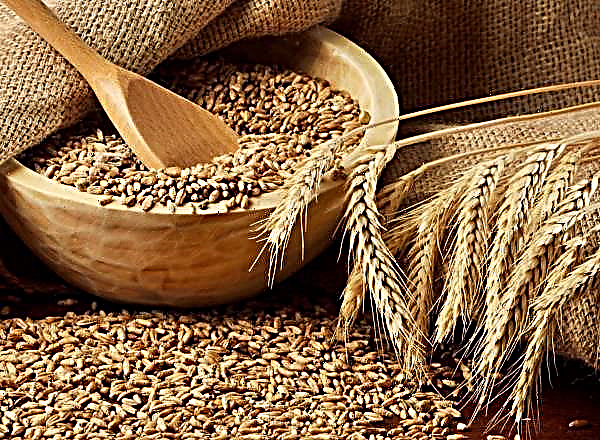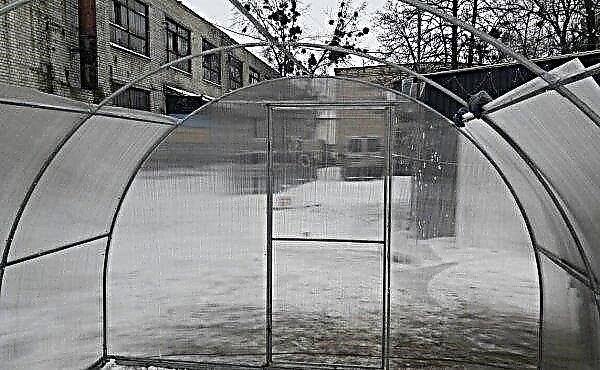Juniper Blue Chip is a representative of stunted coniferous shrubs. He also has the Latin name Juniperus horizontalis. Thanks to its dense furry branches, slightly raised above the surface of the earth, which create the effect of a living carpet, Blue Chip is so fond of landscape designers. With the help of bluish needles, experts create interesting natural compositions that adorn alleys, parks and gardens.
Botanical Description
The Blue Chip evergreen shrub was bred in Canada and the United States. Its name translates as "blue chip." By nature, the plant grows horizontally, covering the ground. Juniper perfectly adapts to climatic conditions, therefore it is distributed throughout the territory of the Russian Federation.
The dwarf evergreen variety differs from the rest, including the Chinese Blue Alps, in its compactness, decorative characteristics and very small scaly needles. An adult plant reaches only 30 cm in height, and the crown reaches 1.5 meters in diameter. Spherical seeds - cone berries are black in color with a slight touch. They reach 6 mm in diameter.
Juniper can be described as susceptible to moist soil and a very photophilous shrub. Due to its place of origin, the plant is frost-resistant and tolerates drought easily. Also, he is not afraid of urban air pollution. Too much saline soil may slow down the growth and development.
Juniperus horizontalis is used not only as a decoration, but also as a backup on slopes or for walls. It strengthens slopes and borders. This variety is ideal for decorating a rock garden or container for decorative crown formation.
Video: Juniper Blue Chip
Landing
Juniper should be planted in place with a fairly large amount of sunlight. A small shadow is allowed, but it should be much smaller than the sun. Planting of seedlings occurs in the spring, preferably in dry land with an acidic or alkaline environment.
The depth of the planting pits is from 50 to 70 cm, and the distance between the bushes should be 2 meters. In the winter, experts recommend sprinkling Blue Chip with 10 cm peat and in the event of heavy snowfalls build a temporary little protection.Important! It is worth noting that the decorative culture does not like stagnation of moisture, its roots can rot. Highly saline soil is also harmful to it. In order for the plant to develop at a normal pace, it is necessary to loosen the soil around it regularly.

Seedling preparation
Before you land the Blue Chip, you must inspect it for dry needles and other damage. If any, then remove the dried parts and trim the tips of the shoots.
In order for the juniper to take root as quickly as possible, it is left for 1 hour in the liquid to stimulate the growth of the root system. In this case, the seedling should be completely immersed in a container with a solution. Only after this can you proceed to the landing.
Site selection and preparation
When choosing a site should be guided by the preferences of a perennial shrub. The place should be spacious and lit. Light partial shade is the place to be. The soil at this location should be nutritious sandy loam and drained. Culture does not like transplants and can hardly endure them, so the choice of a place should be taken very seriously, because it is likely to become a permanent residence of the plant.
Did you know? The long-lived juniper reaches 600 years of age.
Place preparation includes:
- digging;
- getting rid of weeds;
- soil fertilizer.

The depth of the landing pit should be 50–70 cm, and the width should be 2 times greater than the root system. To remove the seedlings from the container, they are abundantly watered so that the seedling can be taken out with a lump of earth.
Important! If your site is alkaline, then it can be acidified using pine bark or coniferous spruce branches.
There should be 3 components at the landing site:
- peat;
- sand;
- turfy soil.

Sour peat allows you to adjust the acid medium suitable for juniper. If the soil is initially acidic, then peat is not applied. It is also worth adding mineral fertilizers and soil substrate. If the land on the site is too dense, then lay 20-25 cm of drainage on the bottom of the pit. As drainage, you can use brick or gravel.
Landing process
The planting process occurs in the spring, when frosts end. Gardeners recommend planting seedlings in late March or in early April. You can also plant a plant in the fall before the onset of cold weather. The landing pit should be 2 times larger in size than the juniper roots.
 Experts recommend making a drainage layer of expanded clay at the bottom of the pit. Then the hole is filled with nutritious mixtures.
Experts recommend making a drainage layer of expanded clay at the bottom of the pit. Then the hole is filled with nutritious mixtures.
When landing, you should adhere to the following sequence:
- Fill the pit with soil from peat, sand and soddy soil.
- Pour it with water.
- After the liquid is absorbed, you need to carefully place the plant there.
- Then the rhizome is sprinkled with dry fluffy earth.
- To prevent water from evaporating as long as possible, the top layer of the earth must be rammed.
Juniper Care
Caring for a horizontal juniper is not as difficult as it might seem at first glance. This is a fairly unpretentious plant. It easily tolerates frosty winters, hot summers and adapts to changes in temperature conditions. At the same time, he still needs to pay attention and engage in watering, pruning, top-dressing, cultivating and mulching.
Important! The neck of the Blue Chip root cannot be sprinkled with soil. The best option is if it stays level with the soil.
Watering
Blue Chip can tolerate prolonged droughts. Nevertheless, he needs regular watering. An adult bush needs to receive moisture 1-2 times a week. Most of all, moisture is important for a young plant, especially in the first year after planting.

Since the root system is not as strong as it needs to be, it cannot receive moisture and nutrients from the soil on its own. Like most plants, juniper loves sprinkling. Natural precipitation favorably affects the bush.
Top dressing
Every summer, autumn and spring, top dressing is carried out once. You can feed with nitrogen, phosphate and organic fertilizers, depending on the needs of the plant. There are also special fertilizers for conifers. They contain the necessary amount of potassium.
Experts recommend using nitrogen top dressing in the spring, as they stimulate the growth and development of the bush as a whole. Phosphorus fertilizers are best used in summer.
Important! In order for the juniper to survive the winter, in the fall it is fertilized with special impurities. Organic substances can be introduced at any time; they will never be superfluous. In addition to nourishing the plant, the structure of the soil improves.
Loosening and mulching
Soil cultivation is done before and after irrigation. It must be carried out very carefully and not deeply, since the juniper roots are located almost on the surface of the earth. By loosening, the moisture will not stagnate, and air filtration will also increase.
After the water is completely absorbed, the trunk circle must be mulched with compost, sawdust, pine bark, wood chips or needles. The mulching layer should be approximately 5 cm. This will retain moisture at the roots longer, and you do not need to water the plant often.
Important! After the first wintering, the shrub must be protected from direct sunlight using a shelter. Ultraviolet light can dry the plant, and young roots will not be able to get the required amount of moisture from the unfrozen spring soil.
Pruning
Every spring, the Blue Chip needs to be cut off. Dry and old branches, damaged and those that have lost their decorative value, are subject to pruning. After wintering, the frozen shoots must also be cut. Juniper Blue Chip is not the type of plant that needs shaping pruning. Unusual landscape figures cannot be made from it.

Winter preparations
In winter, the young seedlings of the horizontal juniper Blue Chip are covered, but only in the first year after planting. The trunk circle is mulched with peat or sawdust, and the crown is covered with coniferous branches of other cultures. The adult plant is frost-resistant and absolutely does not need shelter.
Did you know? Since ancient times, people believed that the juniper bush dreams of good changes, good luck and promises wealth.
Possible diseases and pests
Despite the fact that Juniper Blue Chip is a fairly unpretentious plant, it is nevertheless endangered from the side of pests and diseases.
Most often, an evergreen shrub is attacked by:
- aphid;
- spider mite;
- caterpillar;
- scale shield.

In order for the bush to grow safely in spring and summer, preventive measures must be taken. Blue Chip needs to be treated with one of the listed insecticides 2 times with an interval of no more than 10 days:
- "Aktara";
- "Actellicus";
- Confidor
- "Angio."

There are not so many diseases in Juniperus horizontalis - it is rust and root rot. You can understand that the bush is infected with root rot, by the color of the branches, a whitish coating appears on them.
To counter this disease, use such drugs:
- "Switch."
- "Maxim".
- Topsin.
- "Speed".
- Quadrice.

The second disease - rust can be determined by a number of symptoms: the needles acquire a reddish tint, and the shoots dry out. Once these signs are noticed, the shrub should be sprayed with Arcerid. Restoring immunity after any disease or pest will help micronutrient fertilizing.
Breeding methods
Juniperus horizontalis is a type of plant that propagates better by cuttings or cuttings than by seed. Propagating perennial layering is considered the most acceptable method. For this, healthy and sufficiently developed layers from the lower branches are selected. The soil must be loosened, with peat, sand and moist.
Shoots are attached to the ground using staples. Thus, from six months to a year, layering takes root. It is important to always keep the soil moist. Once the roots are finally rooted, cuttings are cut from the mother plant and transplanted.
Propagation by cuttings is a little more complicated than layering. This process is more time consuming. In this case, cuttings are small shoots that grow on the side. The length of the cuttings is 10-12 cm. It is necessary to cut the planting material before the buds open, that is, in early spring. The lower part of the shank must be cleaned of needles by 5 cm.
 In summer, seedlings can be planted on the site, and in winter they should be covered with a film.
In summer, seedlings can be planted on the site, and in winter they should be covered with a film.
Before planting, they are left for half an hour in a solution that stimulates root growth. Then the cuttings are planted in a loose substrate. The temperature in the room during planting should be +15 ... + 18 ° С and increase with time to + 23 ° С. Watering at this time should be regular.
Experts say that the seed method is the most ineffective. It takes a lot of time and effort. In addition, reproduction in this way does not guarantee that the new plant will retain the characteristics of the mother shrub.

Use in landscape design
The perennial juniper Blue Chip has been popular with landscape designers for many years. This variety in many countries has become a leader among garden crops.
Important! In addition to the fact that the bush carries decorative qualities, it is also useful. Shrub thanks to its roots strengthens slopes and filters the air.
It is good in decor in that:
- It has been growing over the years.
- Evergreen with fluffy blue branches.
- It looks good near ponds and rock gardens.
- Juniper thickets form a living carpet, which can serve as a backdrop for other colorful plants.
- With the help of Blue Chip, you can beautifully design the wall design.

Blue Chip variety goes well with junipers of other colors and shapes. Such a tandem will create an unusual texture and color composition that everyone wants to photograph.
Unpretentious ornamental plant can be grown almost anywhere in the world. It is frost-resistant and tolerates a dry climate without any problems. Juniper does not require any special care and at the same time looks good all year round. Even in winter, breaking out of the snow, it will decorate your garden.

